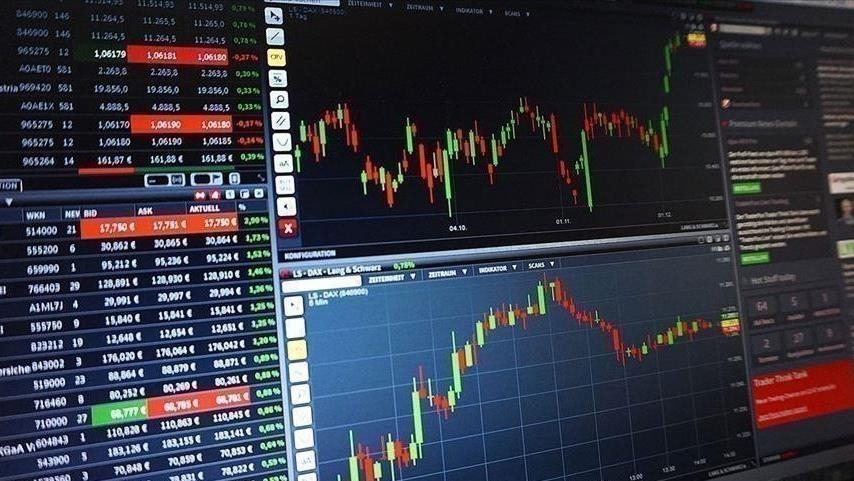LONDON
The turmoil in the banking industry could pose the biggest current threat to the global economy amid fears that other banks could be vulnerable to strains stemming from high interest rates, particularly in Europe.
Last month saw the bankruptcy of Silicon Valley Bank (SVB) and Signature Bank in the US, and the announcement that Saudi National Bank, the largest shareholder of Swiss-based Credit Suisse, would not be increasing its stake triggered uncertainties in markets.
Switzerland’s largest bank, UBS, bought its troubled rival Credit Suisse for 3 billion Swiss francs ($3.2 billion) with government assistance.
The turmoil in the banking industry came at a time when central banks, especially in advanced economies, have been raising interest rates to lower persistent inflation as countries across the world are dealing with a cost of living crisis.
Increasing interest rates to fight the high inflation creates problems for banks that have bonds because it causes some bonds and loans to lose value, Jon Danielsson, the director of the Systemic Risk Centre at the Department of Finance of the London School of Economics, told Anadolu in an interview.
SVB announced early in March that it sold its $21 billion bond portfolio at a $1.8 billion loss. After the bank was quickly closed by US regulators, First Citizens Bank agreed to buy SVB’s deposits and loans, approximately $72 billion of its assets, at a discount of $16.5 billion.
“When central banks raise interest rates, the aim is to slow growth. The fact that bond prices have fallen is part of the normal consequence when you raise interest rates a lot. That is a channel, the transmission of policy rates onto real activity,” Michael Saunders, a senior economic advisor at Oxford Economics and a former member of the Monetary Policy Committee at the Bank of England, told Anadolu.
He said the banks in the US were tightening lending standards even before the recent strains in the banking system, reflecting higher interest rates and expectations of slower economic growth, and those which saw failures were badly managed.
– There are other badly run and fragile European banks
“We have seen two big banks (in the US) fail recently. There is a lot of fear that other banks in Europe and elsewhere might fail in the future. It is currently much more difficult to react to any business finance threats from the financial system than it was in the crisis 15 years ago, and I think that is the biggest threat to the world economy,” Danielsson said.
Recalling the demise of Credit Suisse, Danielsson noted that recently, there have been also some other European banks having serious strain.
“The increased rates to meet inflation is the biggest problem that everybody worries about. We do not know if another bank somewhere is vulnerable to that. Credit Suisse was a bank that was already very weak and badly run with a lot of problems. Then a small shock came, and that was enough to cause Credit Suisse to fail,” he said, adding that there are other European banks that are badly run and very fragile, including Deutsche Bank.
Thus, Danielsson said, any potential new problems can trigger another big bank failure, and that is the biggest threat to the world economy at the moment.
“I do not think that governments and the central banks have the capacity to deal with any potential problems, as they do not have the fiscal ability and money to spend. Central banks worry so much about inflation now that they cannot do quantitative easing and print money to help the system,” he said.
“So those two come together and make it difficult for governments to respond. Thus, it is almost an impossible problem to be solved.”
– No single story for global economy, problems vary across regions
The head of the International Monetary Fund (IMF), Kristalina Georgieva, said Thursday that the turmoil in the global banking sector showed there were still dangers for central banks to overcome but she urged policymakers to continue using high interest rates to fight inflation.
The effects of the recent crisis on economic growth could be modest, said Saunders, who added however that growth in advanced economies is likely to be pretty slow this year as the tightening monetary policy will have an impact in terms of restraining demand.
He said the problems in relation to the economies vary in regions.
“The energy crisis is really a European story. It is much less an issue in the US or in Asia. In the US, the issue is with some of the smaller banks, but it is still not like the 2009 financial crisis,” Saunders said. “In the UK, high energy prices had an impact on the economy, but wholesale gas prices have fallen so much and that is the main reason why the economic outlook is not as bad as it was previously. But still, the conditions are going to be pretty tough for the UK economy.”
Thus, he said, there is currently no single story for the global economy.
The IMF expects global economic growth to remain around 3% over the next five years, the lowest medium-term growth forecast since 1990.

